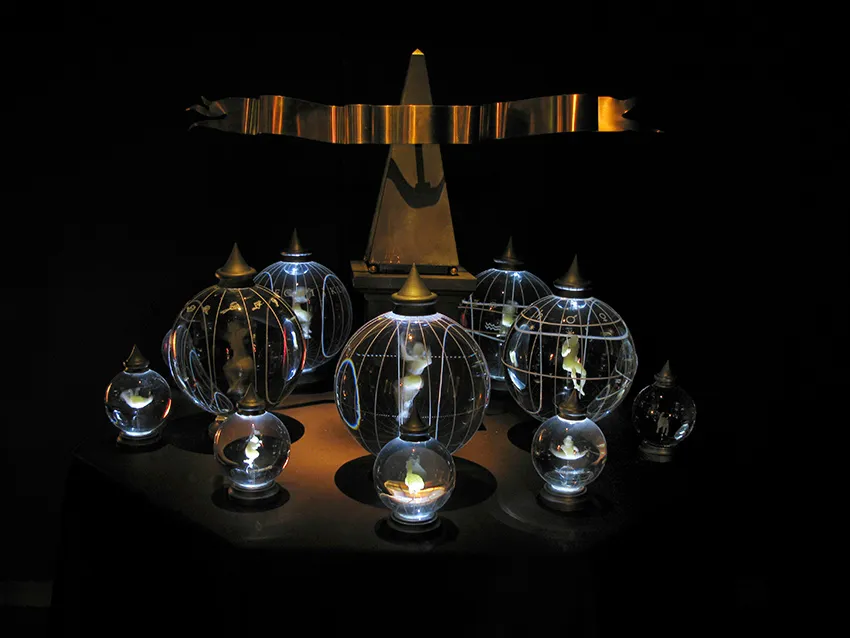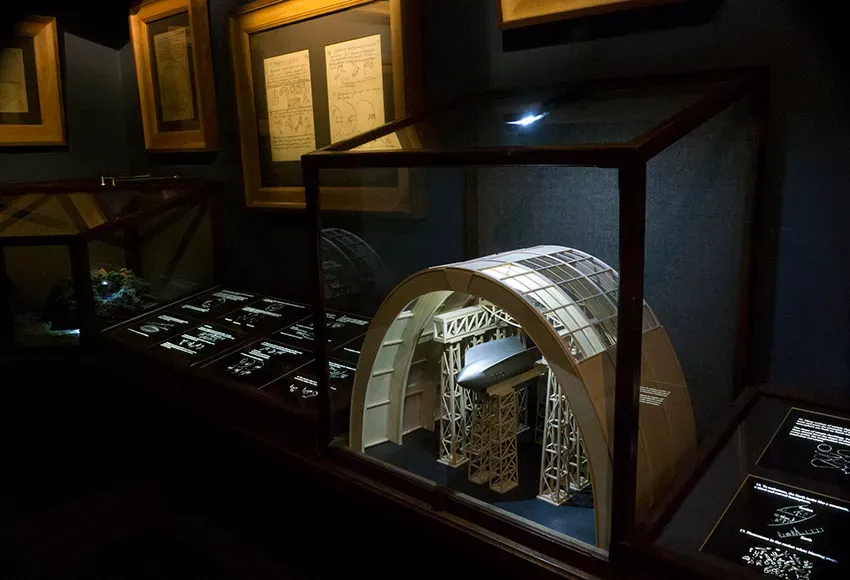I didn't know what to expect, aside from the hype, when I walked into the Museum of Jurassic Technology, but the place was already off to a good start. It occupies a small, rustic-looking building with a wall fountain in the Culver City area of Los Angeles, possessing the kind of quaintness that, to me, belies the depth of the stuff inside.
Many museums have great, expansive rooms full of echoing footsteps, murmurs, and empty space. Their light is bright and their air is cold. The text on the placards by each piece of art or history is bland, factual, and on-topic.
This museum is not so constrained. Its corridors are huddled and its lights are dim, and each room is nestled so close to the others that the sounds, and even the smells, bleed from one exhibit into the next.
It's also a nonlinear experience. Although it uses some of the trappings of a museum – lectures through an earpiece at the push of a button, for instance – there are no guiding arrows, no tours really. Visitors explore as they like, letting whim and intuition steer them, and when they reach a dead end, they can retrace their steps and find another path.
But what is this place? After spending at least an hour and a half inside, I can't answer that question both quickly and honestly, although that fact by itself is part of the answer. The best I can do is give a few choice examples of what I encountered, leaving the rest for travelers to discover for themselves, should they go in blind as I did.

Many of the exhibits were historical, or at least appeared that way. There was a collection of unique glass perfume bottles, by a couple who had collected them over decades. It was couched, with a few other collections, in an exhibit describing the rise of American trailer culture, which included miniature models of trailer scenes. The room smelled faintly of gasoline.
Other exhibits, especially toward the front, were like small jokes. In a glass case, two tiny green objects were each affixed to the end of a rod. A red light alternated between them, playing a slightly different sound in turn, both an insect-like drone. A closer look revealed that the upper object was a green beetle, the lower one a green gem. A sign above the case read, "Protective Auditory Mimicry."

Still more exhibits strained the facts, in a spectrum between the poles of obvious and questionable. An exhibit on animals superimposed their sluggish timelapse holograms over plaster models of ancient books, each placard beneath citing the Bible, or the first-century natural philosopher Pliny the Elder.
One placard informed me that stags are known to draw snakes out of hiding by spitting water into their dens, after which the stag will eat the snake to cure itself of illness. There were no phones allowed, so I was helpless; I couldn't search for where Pliny had written such a thing, if he ever had. Instead, all I could do was carry that wonderment with me for the rest of my time there.
And those are just a few of the many things on the first floor. There's a whole second floor of exhibits, and a "Russian-style" rooftop courtyard at the end, with a beautiful garden, a few resident doves, a dog, and free Georgian tea and biscuits (with cream and sugar if desired). I welcomed the opportunity to sit down, sip, and process all I had witnessed – which was impossible in just one visit, I found.
I wondered how a place so full of marvels could have escaped my notice. Maybe the quiet and cozy experience is easily lost in the bustle of such an extroverted city. But the museum has been around since 1988. Many of its exhibits are permanent. I suppose that means I'll have plenty of time to visit again and absorb more of what it has to offer. For now, I hope this account will persuade travelers to make it a regular stop, as I have.
You can make a reservation and learn more about the Museum of Jurassic Technology at https://www.mjt.org/. Tickets cost $12 per person.


